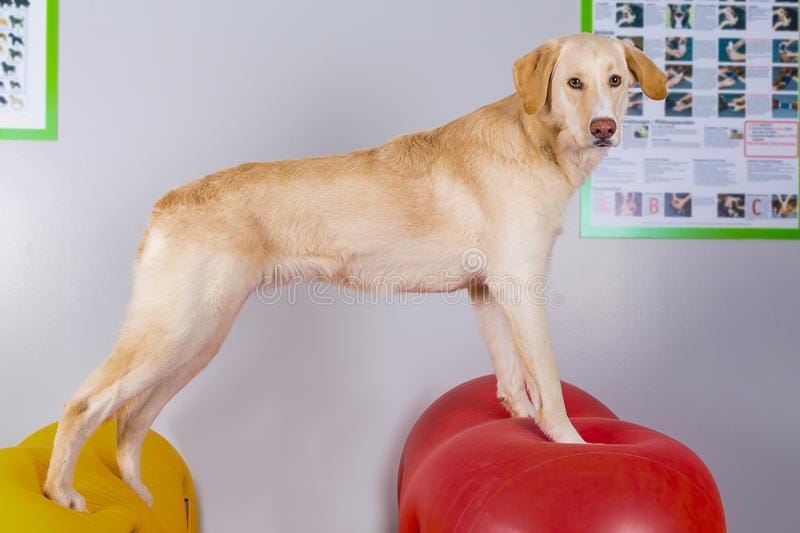- DogSpeak: Redefining Dog Training
- Posts
- Walking Without Worry: Managing On-Leash Reactivity
Walking Without Worry: Managing On-Leash Reactivity
Practical tips, enrichment strategies, and PT insights to help your dog stay calm, confident, and engaged on every walk.

Management Techniques for On-Leash Reactivity: Helping Your Dog Feel Safe on Walks
On-leash reactivity can make even the simplest walk feel overwhelming. One second you’re enjoying the fresh air, and the next your dog spots a trigger and their nervous system flips into overdrive—barking, pulling, lunging, or freezing. It’s stressful for both ends of the leash, and you’re definitely not alone.
While long-term behavior change comes from understanding the dog’s nervous system, building safety, and teaching new skills, we also need something just as important in the meantime: management.
Management isn’t about “controlling” your dog. It’s about protecting their sense of safety, preventing rehearsals of reactive behavior, and giving their brain and body a chance to settle. Think of it as supporting your dog’s emotional wellbeing so actual learning can happen.
Below are realistic, shame-free strategies you can start using today.
Create Space Before Your Dog Needs It
Distance is one of the biggest tools we have for helping reactive dogs stay regulated. When your dog has room to breathe, they’re far more capable of making thoughtful choices.
Give your dog space by:
Crossing the street early
Stepping into a driveway
Making a smooth U-turn before they’re locked onto a trigger
This isn’t “running away.” It’s advocating for your dog’s nervous system.
Choose Environments with Intention
Your dog’s behavior is deeply influenced by the environment they’re in. Busy sidewalks, narrow paths, and unpredictable neighborhoods can overwhelm even very well-trained dogs.
Whenever possible: READ MORE!
Meeting Your Terrier: Understanding Their Ethological Story
Miniature Schnauzer, Jack Russell Terrier, Norfolk Terrier, Cairn Terrier, Border Terrier, Fox Terrier, West Highland Terrier, Yorkshire Terrier.

If you share your life with a terrier, you already know they’re bold, busy, opinionated little creatures with the heart of a lion. But when we look at terriers through Kim Brophey’s ethological lens—considering the job they were bred to do and the environment they evolved in—their behavior stops feeling frustrating and starts making perfect sense.
Terriers weren’t designed to be calm, compliant house dogs. They were developed for a very specific, very intense purpose: locating, chasing, and dispatching small, fast-moving animals in tight, dark spaces. Everything about them—tenacity, quick arousal, independence, persistence, noise sensitivity, their “big feelings”—comes directly from this genetic job description.
When you understand this, you stop asking, “Why does my terrier act like this?” and start asking, “How can I support the needs they were designed to have?”
Meeting your terrier means embracing the traits that make them who they are:
They notice everything. That hyper-awareness was essential for detecting movement underground or in the brush.
They escalate quickly. Quick arousal helped them respond instantly to prey.
They don’t back down easily. Persistence and grit were literally life-or-death traits.
They solve problems independently. No one could crawl underground with them to give instructions—they had to think for themselves.
Instead of trying to train these traits out of them, we can channel them in healthy, safe ways:
Provide purposeful enrichment that taps into digging, sniffing, shredding, and problem-solving.
Offer structured outlets for energy and curiosity rather than expecting endless calm.
Use management in environments that overwhelm their senses.
Honor their need for agency—choice, movement, and autonomy.
Your terrier isn’t being stubborn or dramatic. They’re being a terrier. When you meet them through an ethological, L.E.G.S.-informed perspective, you see a dog who is doing exactly what their genetics prepared them to do. And when we support those needs instead of fighting them, we get a dog who is calmer, more regulated, and more connected to us.
Understanding their story is the first step in helping them thrive in ours.
Unleashed and Enriched
If you’re ready to give your dog more fulfillment, more confidence, and a more regulated nervous system, our Unleashed & Enriched program is the perfect next step. This isn’t obedience—it’s a whole-dog approach built around enrichment, emotional safety, and meeting your dog’s needs in realistic, sustainable ways. If you want support creating a calmer home, easier walks, and a deeper connection with your dog, join us and let’s help your dog thrive from the inside out.
Starting at $85/visit.

Physical therapy isn’t just for dogs recovering from injury—it’s a powerful preventative tool that supports mobility, comfort, and long-term behavioral wellbeing. In this week’s episode, we talk about how strengthening the body reduces pain-related behaviors, why senior dogs especially benefit from targeted movement work, and how PT can help dogs navigate daily life with more confidence and ease. Whether you’re caring for a young dog, an active adult, or a beloved senior, incorporating physical therapy into their routine can make a profound difference in how they feel and how they show up in the world.
If you are local to Middle Tennessee, reach out to 615 Canine PT!
Listen wherever you stream your podcast or click here.
